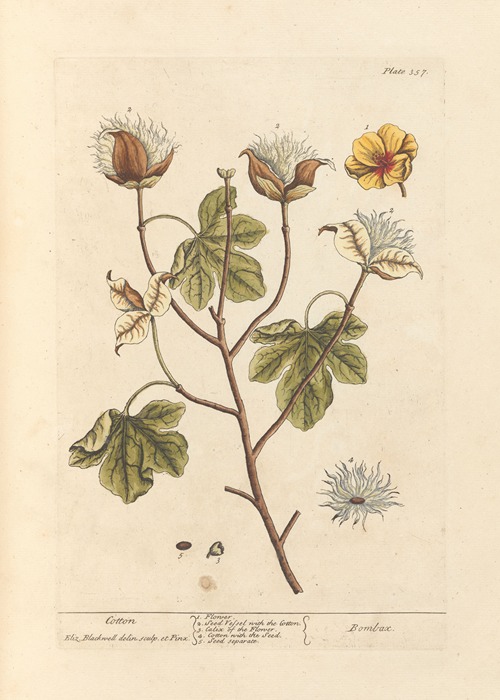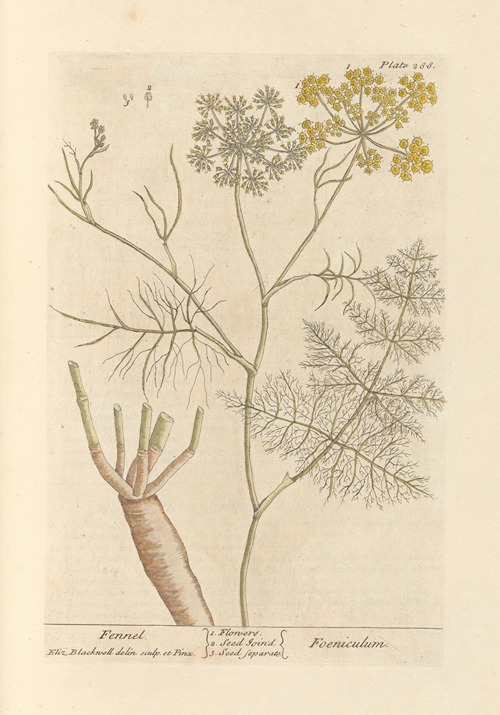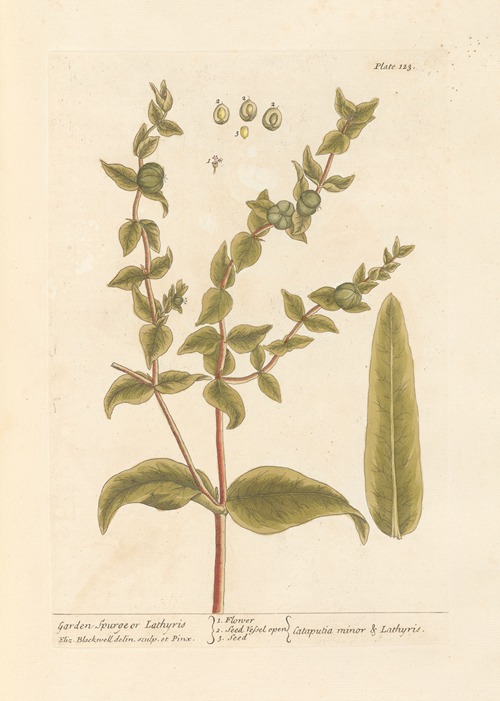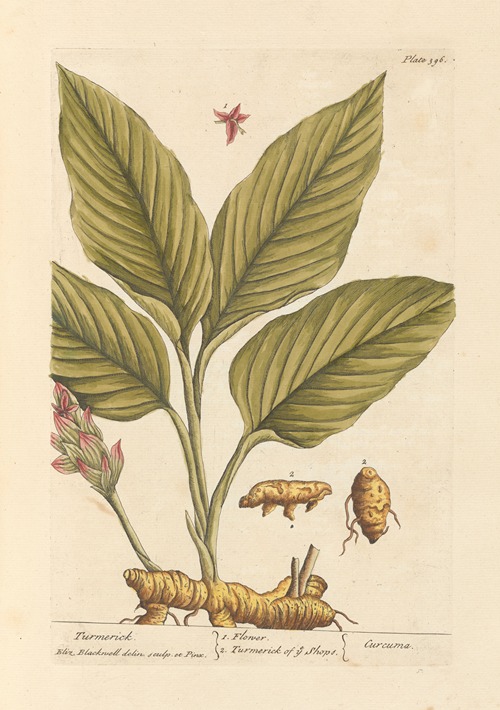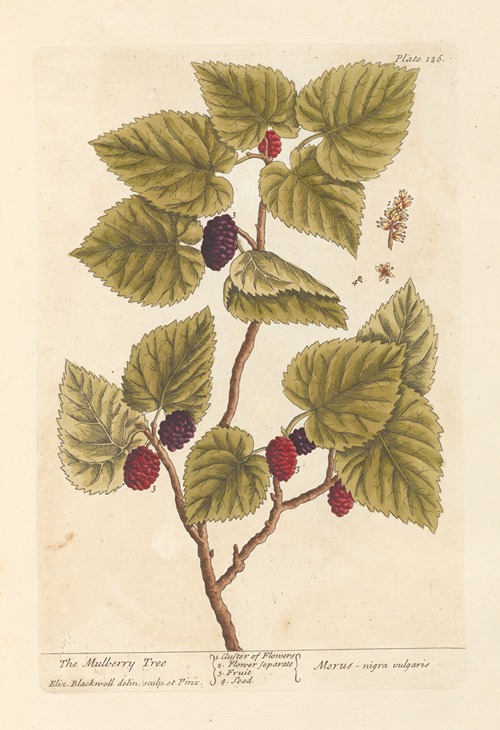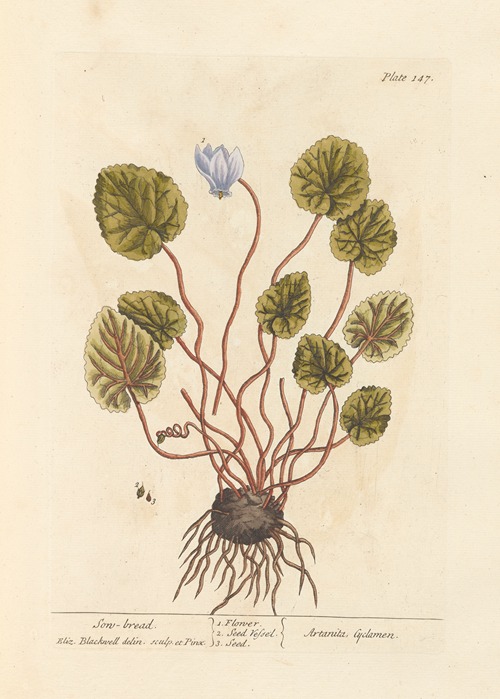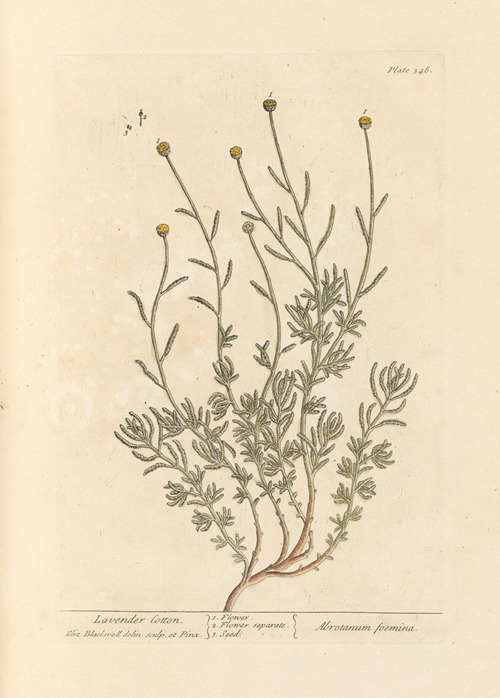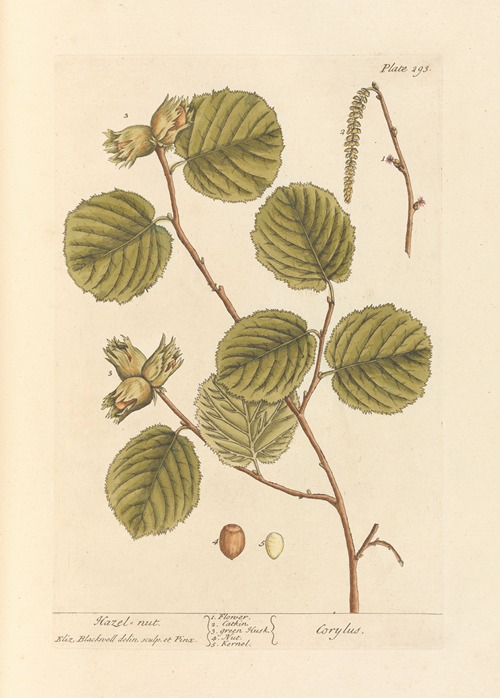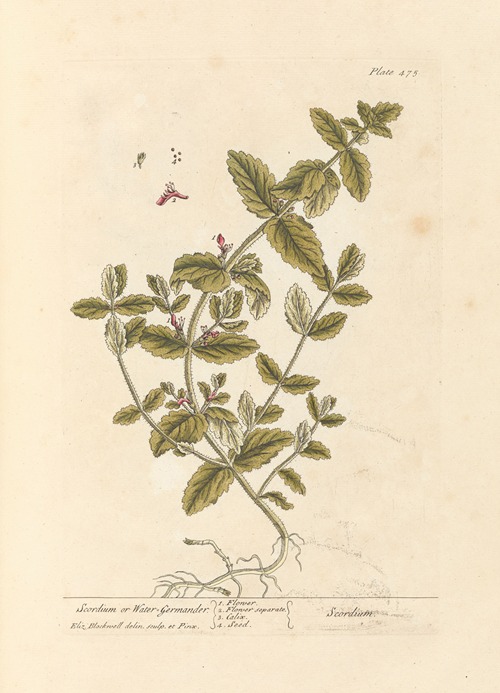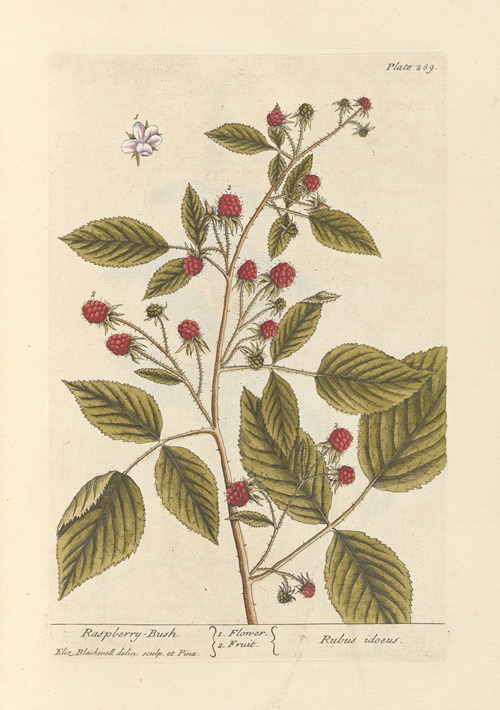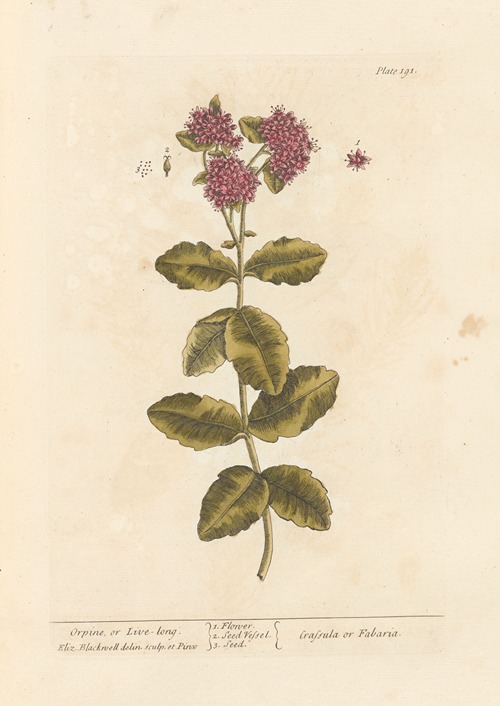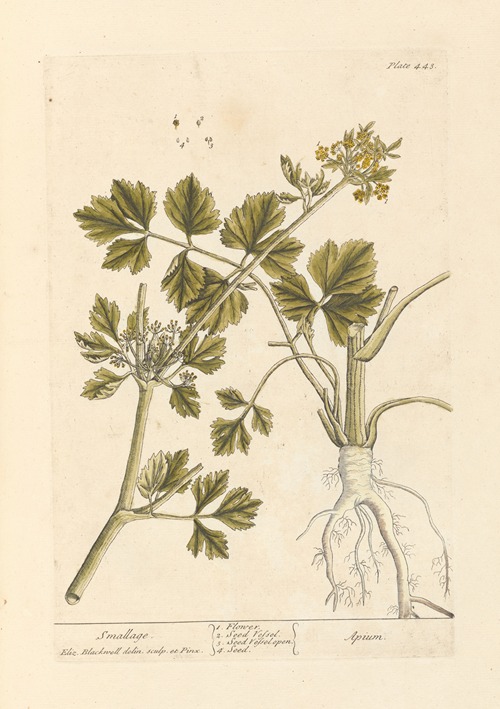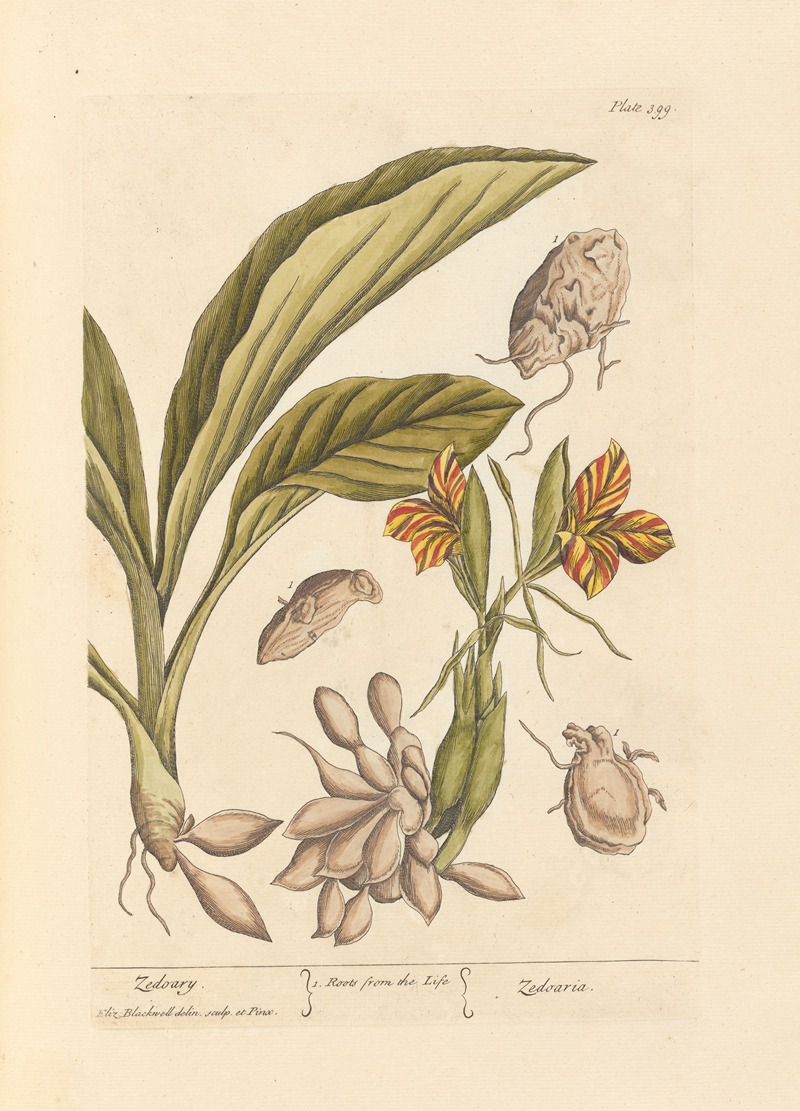
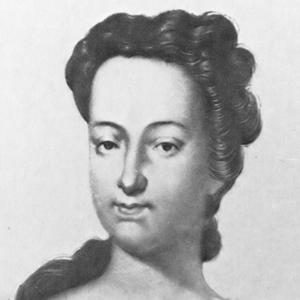
Elizabeth Blackwell was a Scottish botanical illustrator and author who was best known as both the artist and engraver for the plates of "A Curious Herbal", published between 1737 and 1739. The book illustrated medicinal plants, and was designed as a reference work for the use of physicians and apothecaries.
Elizabeth Blachrie was the daughter of William Blachrie, a successful Scottish merchant, and Isobel Fordyce, a sister of the Provost of Aberdeen. Elizabeth's exact date of birth is unknown, though she was likely born between 1707 and 1713. As a young woman, she was educated in art, music, and languages, and she would have received a substantial dowry from her father.
Elizabeth married her second cousin, Alexander Blackwell, as he was completing his education at Marischal College. Elizabeth fled her hometown of Aberdeen when questions arose regarding her husband's qualifications. In fear that Alexander could be charged for illegal practice, Elizabeth and her husband moved to London post-haste. Accounts record that Elizabeth studied as a midwife with William Smellie, but did not pursue this career due to ‘the ignorance and low character of the women who at that time followed the same calling’. Elizabeth's husband continued his questionable decision-making in London. Alexander became associated with a publishing firm and established his own printing house in 1730 despite not belonging to a guild or serving the required apprenticeship. Alexander was charged with flouting trade rules and was heavily fined. These heavy fines, in addition to Alexander's lavish spending habits, led to his subsequent stay in Highgate Prison for two years.
Left to her own devices with no income, a house to run, and a child to raise, Blackwell decided to put to use her training as an artist. She learned that an herbal was needed to depict and describe exotic plants from the New World. She decided that she could illustrate it and that Alexander, given his medical background, could write the descriptions of the plants. As she completed the drawings, Blackwell would take them to her husband's cell where he supplied the correct names in Latin, Greek, Italian, Spanish, Dutch, and German.
Blackwell was an amateur in botany. To compensate for this, she was aided by Isaac Rand, then curator of the Chelsea Physick Garden, where many of these new plants were under cultivation. At Rand's suggestion, she relocated near the Garden so she could draw the plants from life. In addition to the drawings, Blackwell engraved the copper printing plates for the 500 images and text and hand-colored the printed illustrations. It was common for artists to hire a professional engraver to create plates, but Blackwell took it upon herself in order to save this expense. Pages of written descriptions for each plant were added that included a physical description, growth habit, where and when the plant could be located, how each part could be used, and the other names for the plant provided by Blackwell’s husband.
The task of creating A Curious Herbal was immense and took a number of years to complete. A Curious Herbal, containing five hundred cuts of the most useful plants which are now used in the Practise of Physick, to which is added a short description of ye plants and their common uses in Physick was issued in weekly parts, each containing four plates and accompanying text over 125 weeks between 1737 and 1739. The first volume contained 250 plates and was published in 1737. The imprint read "London printed for Samuel Harding in St Martin’s Lane" and the new publication was announced in the Gentleman’s Magazine for July 1737."
In addition to creating her own illustrations and engravings, Elizabeth also marketed the book herself, both through journals and by word of mouth. The Country Journal: or the Craftsman for 6 May 1738 records the publication of the first volume of 252 plates of plants. It noted further that "a further 132 plates of plants for the second volume" had been published and that "the whole 500 will be finished in eight months"; a dedication to Dr. John Johnstoun is dated 17 January 1739. The advertisement in The Country Journal closes with a warning against a spurious and base copy of the work sold by Samuel Harding. One such copy had been made by a group of printers and engravers who attempted to duplicate some of Elizabeth’s plates, but her husband Alexander prosecuted them.
The first printing of A Curious Herbal met with moderate success, both because of the meticulous quality of the illustrations and the great need for an updated herbal. Physicians and apothecaries acclaimed the work, and it received a commendation from the Royal College of Physicians. A second edition was printed 20 years later in a revised and enlarged format in Nuremberg by Dr. Christoph Jacob Trew, a botanist and physician, between 1757 and 1773.
Revenue from the book led to Alexander's release from prison. However, within a short while debts again accumulated, forcing the couple to sell half of the publication rights to the book to John Nourse, a bookseller in London. In April 1747, the Blackwells sold their remaining half share of the publication rights, all remaining copies of the book, and all of the copper plates to Nourse to settle an outstanding debt. Alexander also became involved in several unsuccessful business ventures, and eventually left the family to start a new life in Sweden. Where Alexander's trail of bad decisions lead him to death by execution for conspiracy against the Crown on 9 August 1747 as Elizabeth was leaving London to join him.
Little is known of Blackwell's later years, though she possibly continued her original training as a midwife. She was buried on 27 October 1758, and her grave is at All Saints Church in Chelsea, London. Her name is one of four on a plaque in Chelsea Old Church commemorating Chelsea women distinguished by their learning and piety. She remained loyal to Alexander throughout, even sharing royalties with him from the sale of additional book rights.
Blackwell has a genus of plants named after her, Blackwellia of the class Dodecandria Pentagynia. There are six sub species of Blackwellia; Blackwellia Panticulata, Blackwellia Glauca, Blackwellia Nipaulensis, Blackwellia Axillaris, Blackwellia Siralis, Blackwellia Padifolia. These species are native to Réunion, Mauritius, Nepal, Madagascar, Peru and China respectively.

